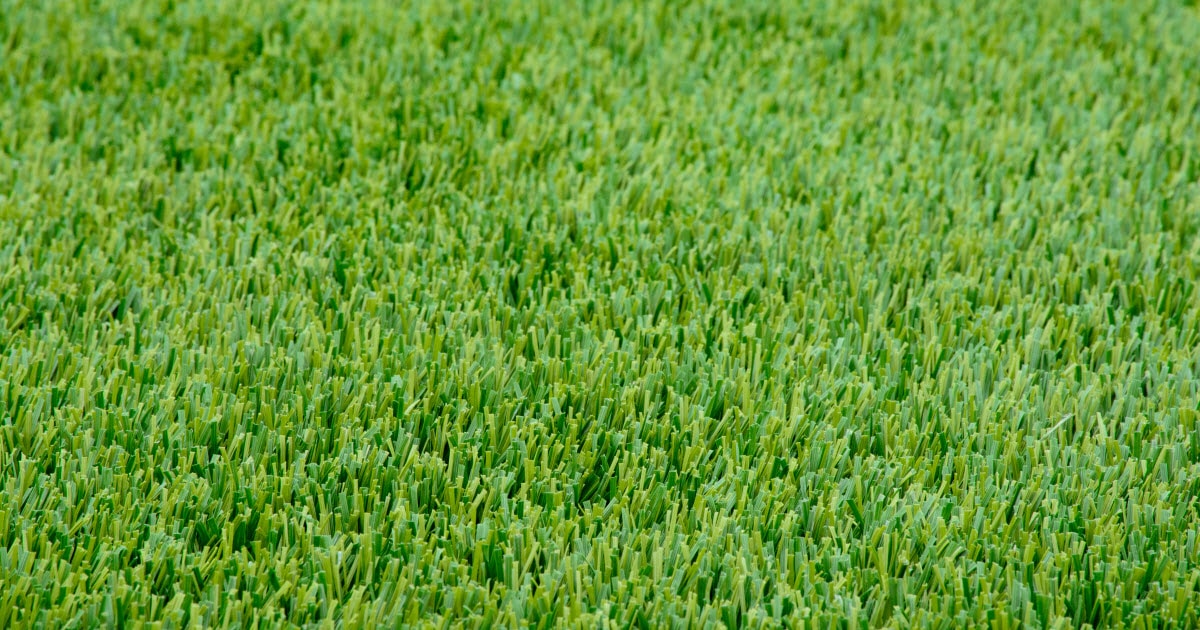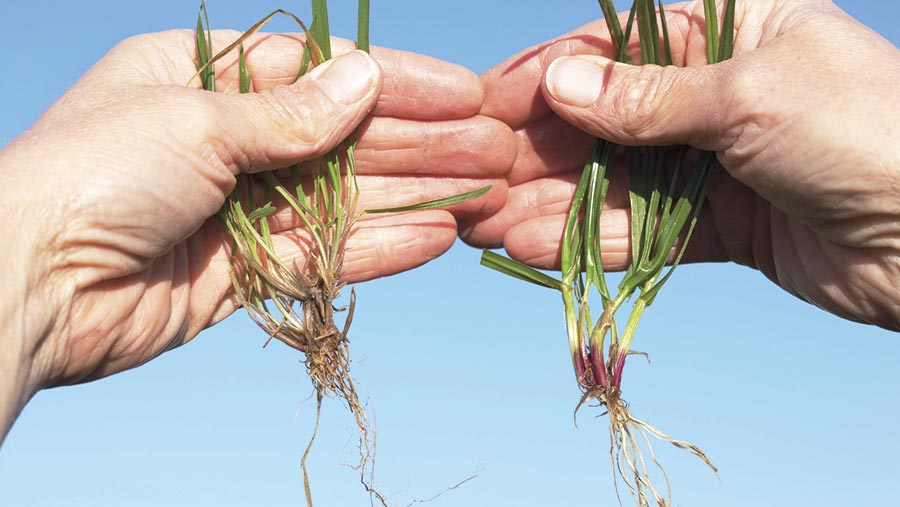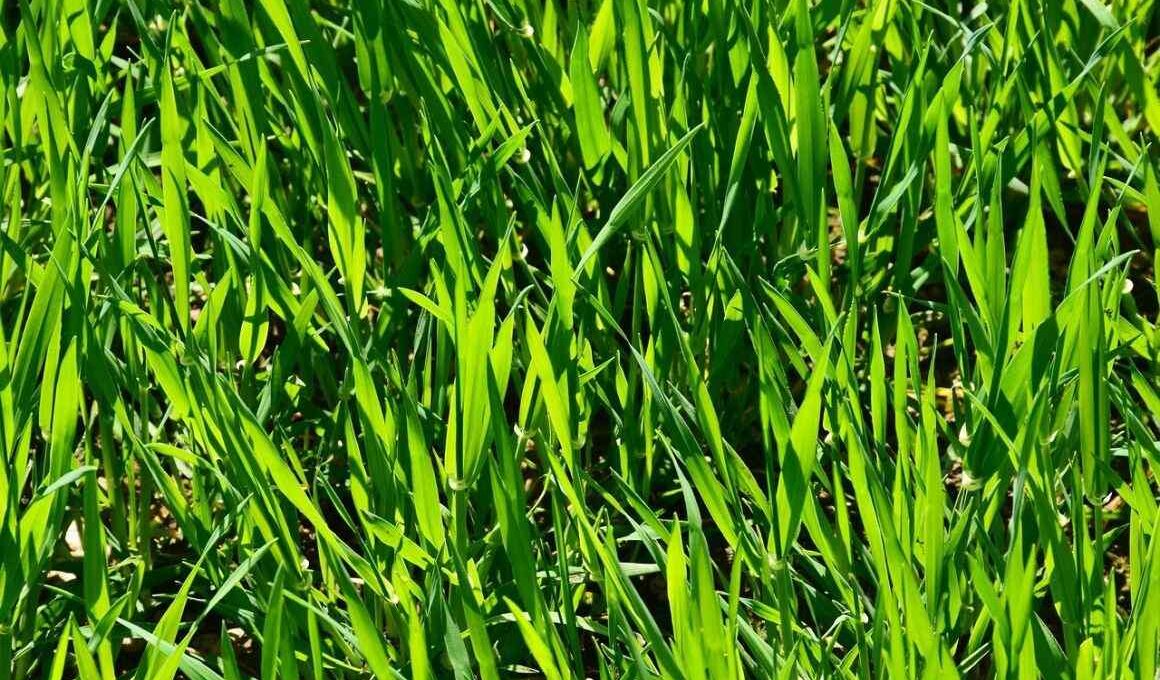What is Rye Grass and How Does it Grow?
Rye grass is a type of cool-season grass that is widely used as a cover crop, forage, and lawn alternative. It is a member of the Poaceae family and is scientifically known as Lolium multiflorum. Rye grass is a fast-growing, fine-textured grass that can thrive in a variety of environments, from full sun to partial shade and in a range of soil types.
Rye grass is commonly used as a cover crop to prevent soil erosion, improve soil health, and provide a green manure for crops. It is also used as a forage crop for livestock, as it is high in fiber and protein. In addition, rye grass is gaining popularity as a lawn alternative, particularly in areas with mild winters and cool summers.
Rye grass is a cool-season grass, meaning it grows best in temperatures between 40°F and 75°F (4°C and 24°C). It can tolerate light frosts and can survive with minimal watering, making it an attractive option for water-conscious gardeners. Rye grass can grow up to 3 feet (90 cm) tall, but it is typically mowed to maintain a height of 2-3 inches (5-7.5 cm).
One of the key benefits of rye grass is its ability to outcompete weeds, reducing the need for herbicides and other chemicals. It also has a deep root system, which helps to prevent soil erosion and improve soil structure. Rye grass is also a good choice for areas with poor soil, as it can help to improve soil fertility and structure over time.
While rye grass is a popular choice for many gardeners and farmers, it is essential to understand its life cycle to determine whether it is a perennial or annual crop. In the next section, we will explore the difference between perennial and annual plants and how they relate to rye grass.
Perennial vs Annual: What’s the Difference?
When it comes to understanding the life cycle of rye grass, it’s essential to know the difference between perennial and annual plants. Perennial plants are those that live for more than two years, often regrowing new growth from the same roots year after year. Annual plants, on the other hand, complete their life cycle within a year, germinating, growing, producing seeds, and dying all within a single growing season.
Rye grass can be either perennial or annual, depending on the specific variety and growing conditions. Perennial rye grass is characterized by its ability to regrow new growth from the same roots year after year, making it a popular choice for lawns and pastures. Annual rye grass, on the other hand, is often used as a cover crop or forage, as it can be planted and harvested within a single growing season.
Perennial rye grass has several advantages over annual rye grass. For one, it requires less maintenance, as it doesn’t need to be replanted every year. It also tends to be more drought-tolerant and can outcompete weeds more effectively. However, perennial rye grass can be more expensive to establish, and it may require more frequent mowing to keep it looking its best.
Annual rye grass, on the other hand, is often less expensive to establish and can be planted in the fall or early spring. It can also be used as a nurse crop to help establish other plants, such as perennials or trees. However, annual rye grass may require more frequent watering and fertilization, and it can be more susceptible to disease and pests.
Understanding the difference between perennial and annual rye grass is crucial for determining whether your rye grass is a perennial or not. In the next section, we’ll explore how to identify whether your rye grass is perennial or annual, and what that means for its care and management.
How to Identify if Your Rye Grass is Perennial
Identifying whether your rye grass is perennial or annual can be a bit tricky, but there are several characteristics you can look for to make a determination. One of the most obvious signs of perennial rye grass is its ability to regrow new growth from the same roots year after year. If your rye grass is coming back year after year, it’s likely a perennial variety.
Another way to identify perennial rye grass is to look at its root depth. Perennial rye grass tends to have a deeper root system than annual rye grass, which allows it to survive harsh winters and droughts. If you notice that your rye grass has a deep root system, it’s likely a perennial variety.
Regrowth habits are also a good indicator of whether your rye grass is perennial or annual. Perennial rye grass tends to regrow new growth in the spring, while annual rye grass typically germinates in the fall or early spring. If you notice that your rye grass is regrowing new growth in the spring, it’s likely a perennial variety.
Finally, you can also look at the growth pattern of your rye grass to determine whether it’s perennial or annual. Perennial rye grass tends to grow in a more uniform pattern, while annual rye grass tends to grow in a more scattered pattern. If you notice that your rye grass is growing in a uniform pattern, it’s likely a perennial variety.
By looking for these characteristics, you can determine whether your rye grass is perennial or annual. If you’re still unsure, you can always consult with a gardening expert or take a sample of your rye grass to a nursery or gardening store for identification.
Now that we’ve discussed how to identify whether your rye grass is perennial or annual, let’s talk about the benefits of perennial rye grass. In the next section, we’ll explore the advantages of perennial rye grass, including its ability to outcompete weeds, reduce soil erosion, and provide year-round cover.
The Benefits of Perennial Rye Grass
Perennial rye grass is a valuable crop for many reasons. One of its most significant benefits is its ability to outcompete weeds, reducing the need for herbicides and other chemicals. This makes it an attractive option for farmers and gardeners looking to reduce their environmental impact.
Another benefit of perennial rye grass is its ability to reduce soil erosion. Its deep root system helps to hold the soil in place, preventing it from being washed or blown away. This makes it an excellent choice for areas with heavy rainfall or strong winds.
Perennial rye grass also provides year-round cover, making it an excellent choice for lawns and pastures. Its dense growth habit helps to prevent soil compaction, and its ability to regrow new growth in the spring makes it a low-maintenance option.
In addition to its environmental benefits, perennial rye grass is also a valuable crop for livestock. Its high fiber and protein content make it an excellent feed source for cattle, sheep, and other animals.
Perennial rye grass is also a good choice for areas with poor soil. Its ability to tolerate a wide range of soil types and conditions makes it an excellent option for areas with poor soil fertility or structure.
Overall, perennial rye grass is a valuable crop that offers many benefits to farmers, gardeners, and the environment. Its ability to outcompete weeds, reduce soil erosion, and provide year-round cover make it an attractive option for many applications.
Now that we’ve discussed the benefits of perennial rye grass, let’s talk about how to care for it. In the next section, we’ll explore the importance of proper maintenance for optimal health and longevity.
How to Care for Perennial Rye Grass
Proper care and maintenance are essential for the health and longevity of perennial rye grass. One of the most important aspects of care is mowing. Perennial rye grass should be mowed regularly to maintain a height of 2-3 inches. This will help to promote healthy growth and prevent the grass from becoming too tall and leggy.
Watering is also crucial for perennial rye grass. It should be watered deeply but infrequently to encourage deep root growth. This will help the grass to survive droughts and other periods of water stress. However, overwatering can be detrimental to the health of the grass, so it’s essential to monitor the soil moisture levels and adjust the watering schedule accordingly.
Fertilizing is another important aspect of care for perennial rye grass. It should be fertilized annually with a balanced fertilizer that contains nitrogen, phosphorus, and potassium. This will help to promote healthy growth and development. However, it’s essential to follow the instructions on the fertilizer package and avoid overfertilizing, as this can damage the grass.
In addition to mowing, watering, and fertilizing, perennial rye grass also requires regular monitoring for pests and diseases. Regular inspections should be carried out to check for signs of pests or diseases, and action should be taken promptly if any issues are identified.
Proper maintenance is essential for the health and longevity of perennial rye grass. By following these care tips, you can help to ensure that your perennial rye grass remains healthy and thriving for years to come.
Now that we’ve discussed how to care for perennial rye grass, let’s explore some common challenges associated with this type of grass. In the next section, we’ll address some of the most common issues that can affect perennial rye grass and provide solutions and management strategies for these problems.
Common Challenges with Perennial Rye Grass
While perennial rye grass is a valuable crop, it can be susceptible to certain challenges. One of the most common issues is disease, particularly fungal diseases such as powdery mildew and rust. These diseases can be managed through the use of fungicides and good agricultural practices, such as crop rotation and sanitation.
Pests are another common challenge associated with perennial rye grass. Aphids, whiteflies, and other insects can feed on the grass, causing damage and reducing its yield. Integrated pest management (IPM) strategies, such as introducing beneficial insects and using insecticides, can help to manage pest populations.
Competition from other plants is also a challenge that perennial rye grass may face. Weeds, such as dandelions and clover, can compete with the grass for water, nutrients, and light. Good agricultural practices, such as proper mowing and fertilization, can help to reduce weed pressure and promote healthy growth.
Soil compaction is another issue that can affect perennial rye grass. Heavy foot or vehicle traffic can compact the soil, reducing its ability to absorb water and nutrients. This can be managed through the use of conservation tillage and cover crops, which can help to reduce soil compaction and promote soil health.
Finally, perennial rye grass can be susceptible to environmental stresses, such as drought and extreme temperatures. Good agricultural practices, such as proper irrigation and fertilization, can help to reduce the impact of these stresses and promote healthy growth.
By understanding these common challenges and taking steps to manage them, farmers and gardeners can help to ensure the health and productivity of their perennial rye grass crops.
Now that we’ve discussed some of the common challenges associated with perennial rye grass, let’s explore the possibility of using it as a lawn alternative. In the next section, we’ll discuss the advantages and disadvantages of using perennial rye grass as a lawn alternative.
Using Perennial Rye Grass as a Lawn Alternative
Perennial rye grass is a popular choice for lawns due to its durability, low maintenance requirements, and ability to thrive in a variety of conditions. Compared to traditional lawn grasses, perennial rye grass has several advantages. For one, it is more resistant to wear and tear, making it an excellent choice for high-traffic areas. Additionally, it requires less watering and mowing, making it a more sustainable option.
However, perennial rye grass also has some disadvantages. For example, it can be more expensive to establish than traditional lawn grasses, and it may require more frequent fertilization. Additionally, it can be more susceptible to disease and pests, particularly if it is not properly maintained.
Despite these challenges, perennial rye grass can be a great option for those looking for a low-maintenance, durable lawn. Its ability to thrive in a variety of conditions makes it an excellent choice for areas with poor soil or limited sunlight. Additionally, its resistance to wear and tear makes it an excellent choice for high-traffic areas.
When considering using perennial rye grass as a lawn alternative, it’s essential to weigh the pros and cons. While it may require more upfront investment, its long-term benefits make it a worthwhile choice. Additionally, its ability to thrive in a variety of conditions makes it an excellent choice for areas with unique challenges.
Overall, perennial rye grass is a great option for those looking for a durable, low-maintenance lawn. Its ability to thrive in a variety of conditions, combined with its resistance to wear and tear, make it an excellent choice for high-traffic areas. While it may have some disadvantages, its benefits make it a worthwhile choice for those looking for a sustainable, long-term solution.
Now that we’ve explored the possibility of using perennial rye grass as a lawn alternative, let’s summarize the main points of the article and provide a clear answer to the question “is rye grass a perennial?”
Conclusion: Is Rye Grass a Perennial?
In conclusion, rye grass can be both perennial and annual, depending on the specific variety and growing conditions. Understanding the life cycle of rye grass is essential for optimal management and care. By knowing whether your rye grass is perennial or annual, you can provide the best possible care and maintenance to ensure its health and longevity.
Perennial rye grass offers many benefits, including its ability to outcompete weeds, reduce soil erosion, and provide year-round cover. However, it also requires proper care and maintenance, including regular mowing, watering, and fertilizing.
Annual rye grass, on the other hand, is often used as a cover crop or forage, and can be planted in the fall or early spring. It is a fast-growing crop that can help to prevent soil erosion and provide a green manure for crops.
Whether you are using rye grass as a cover crop, forage, or lawn alternative, understanding its life cycle is crucial for optimal management and care. By following the tips and guidelines outlined in this article, you can ensure that your rye grass remains healthy and thriving for years to come.
In summary, the answer to the question “is rye grass a perennial?” is yes, but it depends on the specific variety and growing conditions. By understanding the life cycle of rye grass, you can provide the best possible care and maintenance to ensure its health and longevity.








